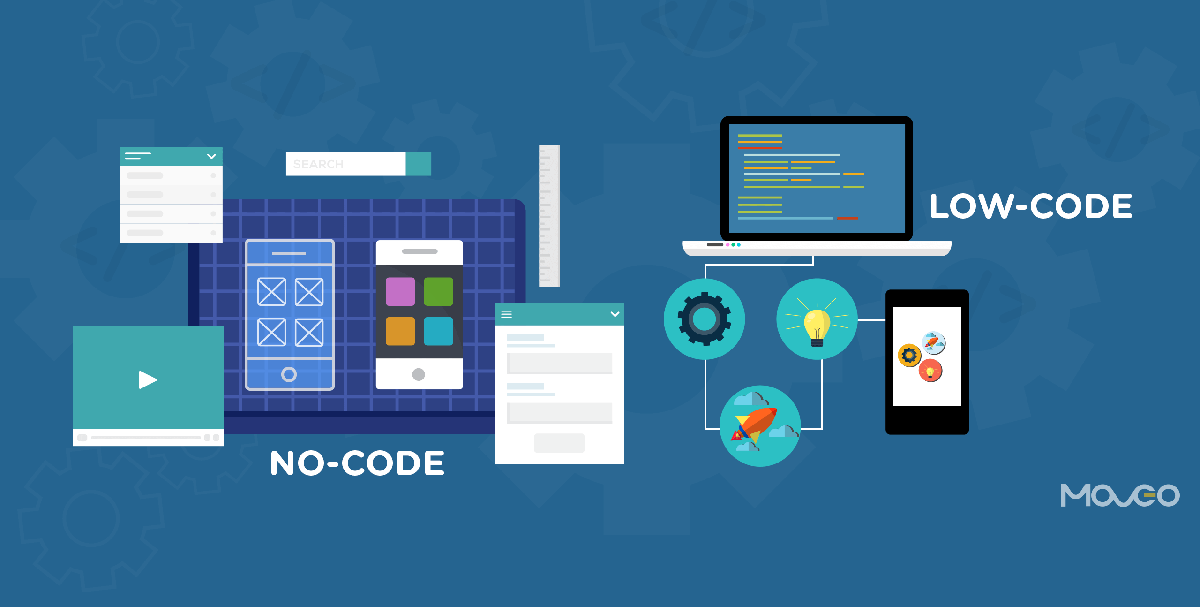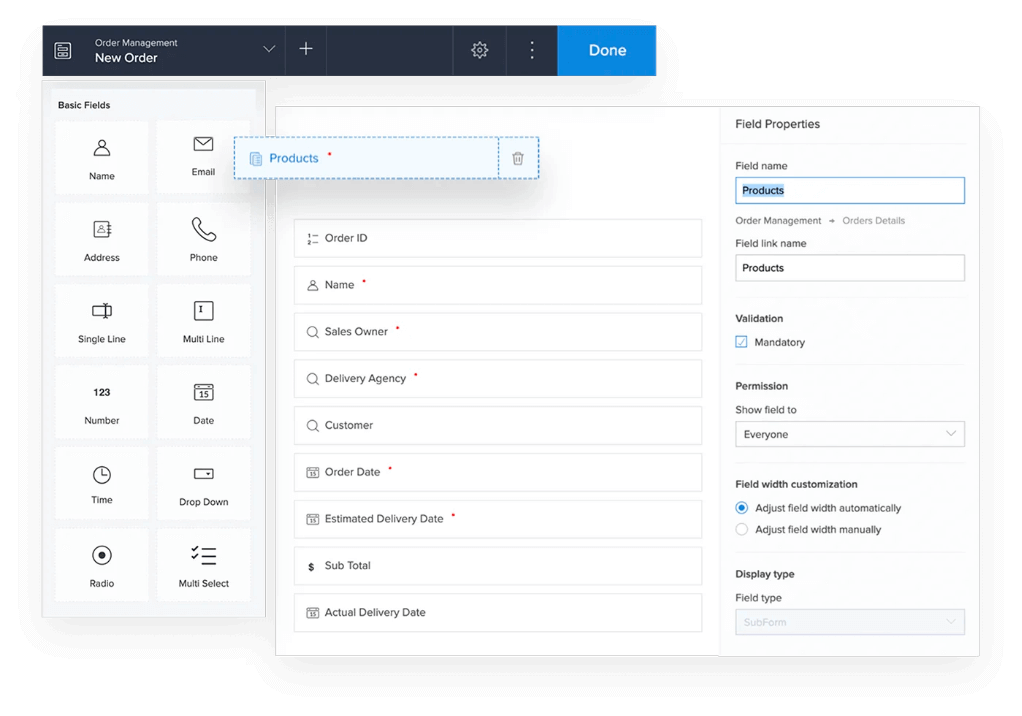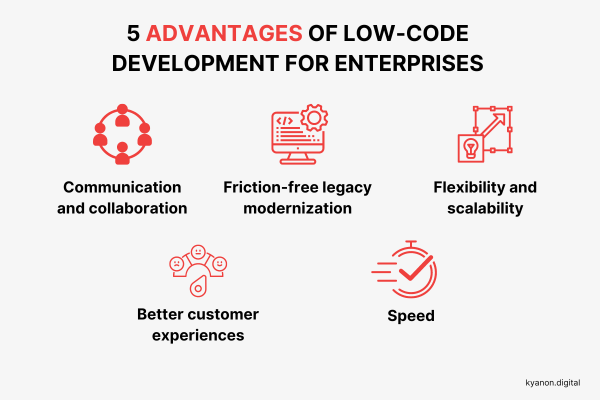Top Advice To Selecting Low-Code Platform Recommendations
Wiki Article
Benefits Of Low-Code Application Development Terms Of Speed
Development of low-code applications significantly increases development speed because of several important factors. Development Environment:
Drag-and-Drop Interfaces: Low-code platforms provide visual tools for designing applications. Developers can utilize drag-and-drop tools to quickly assemble applications without writing a large amount of code.
Many low-code platforms include already-built templates and components that allow developers to quickly test their apps and build them without needing to start from scratch.
Reduced Coding Required:
Automated Code Generating: Low-code platform generates the code underneath based upon the visual models created by developers. This eliminates the need for manual code writing and speed up the process of developing.
Reusable components: Developers have the ability to use reusable component in multiple projects, which can reduce the time they spend writing and testing code.
Collaboration is streamlined:
Low-code development platforms are typically equipped with tools, such as deployment, version control, and testing. This allows for seamless collaboration between teams.
Citizen Development Developers, business users and other users can all participate in application development through user interfaces that are intuitive. This eliminates the bottleneck caused by the lack of availability of skilled developers.
Rapid prototyping and iteration
Rapid prototyping: Developers can create quickly prototypes in order to collect feedback and verify ideas, resulting in faster cycles of iteration.
Simple modifications. The visual nature low-code development gives allows users to easily update and change applications. This speeds up the process of improving and refining the application by incorporating the feedback of users.
Pre-built Integrations:
API Integrations Low-code platforms have prebuilt connectors that are compatible with the most popular APIs or services. They can speed up the process it takes to integrate external applications.
Data Integration: Built-in tools for data integration simplify the process of connecting databases and other sources of information which speeds up the development process.
Deployment & Scaling
One-Click-Deployment: Many Low-Code platforms have one-click deployment options. This cuts down on the time and effort needed to set up an application.
Cloud-based solutions: Cloud-based low-code platforms are able to handle scaling and infrastructure management which allows developers to concentrate on the logic of their applications and functions instead of the logistics of deployment.
Overall, the benefit of developing applications using low-code in terms of speed is in its ability to streamline and automate various elements of the process, enabling faster delivery of applications and faster adaptation to the changing demands. View the most popular wavemaker.com coding for website tips including cloud software applications, application modernization software, push notifications android, rapid applications, app dev platform, low code platforms, jdbc server, rapid application design, cross platform app dev, azure sql server and more.

Low-Code Software Is Cost-Effective.
Low-code development offers a number of advantages when it comes to cost-effectiveness. Businesses trying to cut costs can benefit from this approach while also delivering high-quality applications. These are the main benefits: Reduced development costs:
Lower Coding Requirements: Low-code platforms minimize the requirement for extensive hand-coding, reducing the amount of time and effort developers must to put into developing applications. This translates into lower costs for labor.
Less developers: Since low-code development is quicker and easier, there are fewer specialized resources for developers required. This will drastically lower costs for hiring and staffing.
Speedier Time to Market
Accelerated Development Cycle: The visual tools for development and the pre-built components offered by low-code platforms facilitate rapid development of applications, which allows companies to bring their products to market quicker. This could result in more revenue and sales as well as improved position in the marketplace.
Rapid Prototyping. Businesses can test quickly and develop prototypes. This reduces time spent during the development phase, and enables faster iterations that are built on feedback from users.
Lower maintenance costs:
Simplified Maintenance: Applications built on low-code platforms tend to be simpler to maintain because of their standardized components and modular architecture. This means that they are less likely to require ongoing maintenance and support cost.
Automated Updates - Many low-code platforms are capable of managing patches and updates in a manner that's both secure and timely. This eliminates the necessity to manually intervene.
Efficient Resource Utilization:
Low-code platforms allow people who are not developers to be part of the process of development. This lets employees and businesses cooperate, and reduces the dependency on high-paid developers.
IT Departments can Focus on Strategic Initiatives: Instead of getting overwhelmed by the daily development tasks, IT departments are able to focus their efforts on strategic initiatives to increase the efficiency and productivity of their departments.
Price models that can be scaled:
Subscription Pricing: A lot of platforms that use low-code provide different pricing options based on subscriptions that can be scaled in accordance with the amount of usage. This lets businesses be able to align their spending to the actual requirements and expansion, while avoiding huge initial expenses.
Pay-as-you-go Options Certain platforms offer pay-as you-go options, ensuring that businesses pay only for the services they use that are useful for small and new businesses with limited budgets.
Lower costs for third-party software:
Built-in Functionalities: Low-code platforms often come with built-in functionalities and integrations that minimize the need for additional third-party tools and software, leading to savings on licensing fees and subscription fees.
Pre-Built Integrates with popular platforms and services it can save you time and money by avoiding the requirement to create custom integrations.
ROI Boosted
Faster Return on Investment: The combination of speedy development, less expensive and a faster time to market means businesses can achieve a faster ROI (ROI) on their apps.
Increased Agility: Businesses are able to rapidly adapt to market trends and demands of their customers and ensure that they remain relevant and can capitalize on new opportunities that arise.
Low Cost Training:
User-Friendly Interfaces: The intuitive interfaces and user-friendly features of low-code platforms reduce the learning curve, thus making it less necessary to conduct extensive training.
Accessible Resources: Many platforms that make use of low-code have extensive training materials, tutorials as well as community support. This eliminates the requirement for formal education as well as the expenses associated with it.
Collaboration Streamlined:
Enhanced collaboration tools Collaboration tools are integrated into the workflow. This enables improved communication between team members as well as an improvement in overhead for projects.
Unified Development Environment. A single, unified software development environment can streamline processes and decrease the cost and complexity of managing multiple platforms and tools.
Overall, the cost effectiveness of low-code software development can be attributed to its ability to cut down on the cost of maintenance and development and increase time to market, optimize resource use, and provide flexible price models. These elements provide substantial financial benefits to business, making low code a compelling option for organizations who want to make the most of their budgets and create robust, scalable, high-quality apps. See the most popular Enterprise application development with Low-code Platform for more tips including build a docker container, app modernization, no code platforms, build a docker container, cross platform mobile development, ms azure sql, application modernisation, azure sql databases, stored sql procedures, application modernisation and more.

Advantages Of Low-Code Application Development With Respect To Limitations And Customization
The low-code approach offers a balanced method that permits extensive customization, and also addresses the issues. These are the major advantages: Handling Limitations
: .
Development simplified: Low code platforms streamline the process by providing templates and pre-built elements. This allows faster application deployment, even for complex ones.
Many platforms have guided workflows, which help developers navigate through complicated processes. They reduce the chance of making mistakes and help maintain the consistency.
Solutions for scaling:
Built-In Scalability: Low-code platforms often include features that support scalable architecture, allowing applications to handle increased loads without requiring significant changes.
Performance Monitoring Tools: tools for monitoring and optimizing performance are built into the application to ensure that it is efficient, even as it scales.
Security and Compliance
Integrated Security Features: Low-code systems come with built-in security measures including encryption, access control based on role and automated compliance checks, addressing common security concerns.
Regular Updates: Platforms regularly change their security protocols as well as conformity measures, making sure that their applications are secure against new threats.
Options for Customization:
Extensibility:
Low-code platforms allow developers to expand functionality beyond what is available by integrating customized code.
Custom Modules and Plugins: Developers have the option of creating custom modules or plugins to modify specific functionality to fit unique business needs.
APIs & Integration:
API Support: Comprehensive support for APIs facilitates seamless integration with external systems and services, which allows the creation of a wide range of customizations and connections.
Third-Party Services : Low-code platform often provides pre-built connections for well-known services offered by third parties, making integration and customization easy.
Flexible UI/UX:
Customizable User Interfaces: Developers can modify and design user interfaces to meet certain design and usability specifications giving users a personalized experience.
Responsive Design: The apps can be adapted to fit different screen sizes and devices.
Custom Business Logic:
Visual Workflow Builds: Visual tools that permit customization of business workflows and rules as well as to design complicated custom processes.
Platforms provide conditional logic that can meet specific business rules or scenarios.
Data Management:
Custom Data Modelling: Those who develop the models define custom models to fit particular requirements of the application. They can adapt processing of data according to a company's requirements.
Advanced Data Processor: The combination of sophisticated data processing tools and capabilities permits the modification of the way data is processed and used in the application.
How do you balance customization with limits:
Frameworks and Standards:
Best Practices: A low-code platform promotes conformity to standards and industry best practices. This can be helpful in maintaining high quality apps that are scalable, secure and reliable.
Governance Frameworks. Inbuilt frameworks for governance ensure that customizations will not compromise security, compliance or integrity of the application.
Iterative Development and Feedback:
Rapid Prototyping: The capability to rapidly prototype and test modifications allows developers to refine their applications based on feedback from users, refining the application to meet the needs of users.
Low-code platforms enable continuous improvement, allowing for ongoing customization and enhancing as business requirements develop.
User Empowerment:
Enabling Citizen Developers by giving non-developers the ability to personalize their apps using intuitive interfaces as well as low-code platforms they increase the number contributors who are able to enhance and tailor application.
Training and Support Information: Many platforms offer extensive training and support materials that allow users to modify applications without compromising their stability or performance.
Low-code development is an effective framework that allows for plenty of flexibility while also addressing shortcomings. This allows companies to create and maintain functional apps tailored to their needs while ensuring high standards of quality, security and the ability to scale.
